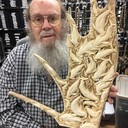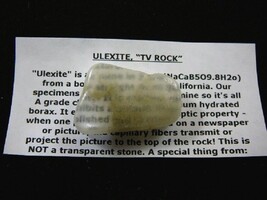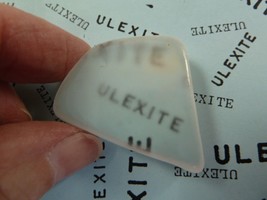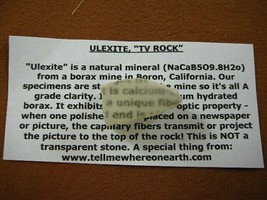(R591-11) Septarian slice Aragonite Calcite and 47 similar items
Free Shipping
(R591-11) Septarian slice Aragonite Calcite mud Mineral rock gemstone specimen
View full item details »
Shipping options
Estimated to arrive by Mon, Jun 16th.
Details
FREE via USPS Priority Mail (2 to 3 business days) to United States
Offer policy
OBO - Seller accepts offers on this item.
Details
Return policy
Full refund available within 30 days
Purchase protection
Payment options
PayPal accepted
PayPal Credit accepted
Venmo accepted
PayPal, MasterCard, Visa, Discover, and American Express accepted
Maestro accepted
Amazon Pay accepted
Nuvei accepted
View full item details »
Shipping options
Estimated to arrive by Mon, Jun 16th.
Details
FREE via USPS Priority Mail (2 to 3 business days) to United States
Offer policy
OBO - Seller accepts offers on this item.
Details
Return policy
Full refund available within 30 days
Purchase protection
Payment options
PayPal accepted
PayPal Credit accepted
Venmo accepted
PayPal, MasterCard, Visa, Discover, and American Express accepted
Maestro accepted
Amazon Pay accepted
Nuvei accepted
Item traits
| Category: | |
|---|---|
| Quantity Available: |
Only one in stock, order soon |
| Condition: |
New |
| Country/Region of Manufacture: |
United States |
Listing details
| Shipping discount: |
Seller pays shipping for this item. |
|---|---|
| Posted for sale: |
More than a week ago |
| Item number: |
1394142226 |
Item description
(Internal # R591-11) This is genuine piece of Septarian slice, specimen from Utah with 2 flat sides, 6-3/8" diameter x average 1/2" thick. Weighs 1 pound 5.1 ounces. Absolutely beautiful.
Yellow center = Calcite
Brown lines = Aragonite
Gray rock = Limestone
One side polished to a high sheen; these work well as coasters for the coffee table, or lovely display pieces
What you see in to photo is what you get.
SEPTARIAN NODULE specimens
Septarian nodules are found 15 miles E of Zion National Park, Utah. They were formed in an ancient sea floor during the Cretaceous period, 50-70 million years ago when the Gulf of Mexico extended into Utah. On the ocean floor, mud formed around decomposed sea life. Rocking back and forth in the water caused mud balls. When the ocean receded, the mud balls dried and cracked open.
Over the eons to follow, mineralized solutions deposited in the cracks. First forming brown ARAGONITE, then golden CALCITE and occasionally BARITE clusters were formed within the cavities. The outside of the mud ball is now a gray limestone rock. As the nodules weathered out of the gray clay hills, at one time they could be picked up by hand on the surface. Now, excavating equipment is required for extraction, 20-40 feet underground.
The name "Septarian" is Latin "Septem" meaning seven. The mud balls cracked with seven points in every direction, creating a beautiful design. The fossil which started forming the Septarian nodule is sometimes noticeable in the rock.
WE SHIP WORLDWIDE, see the chart for postage to your country.
Click on our Store tag for SIMILAR items.
|
Why are we showing these items?
Booth
whereonearth's booth |

|

-
Refine your browsing experience
We can show you more items that are exactly like the original item, or we can show you items that are similar in spirit. By default we show you a mix.
This item has been added to your cart
 (R591-11) Septarian slice Aragonite Calcite mud Mineral rock gemstone specimen added to cart.
Only one available in stock
(R591-11) Septarian slice Aragonite Calcite mud Mineral rock gemstone specimen added to cart.
Only one available in stock
View Cart or continue shopping.
 Please wait while we finish adding this item to your cart.
Please wait while we finish adding this item to your cart.
Get an item reminder
We'll email you a link to your item now and follow up with a single reminder (if you'd like one). That's it! No spam, no hassle.
Already have an account?
Log in and add this item to your wish list.















































